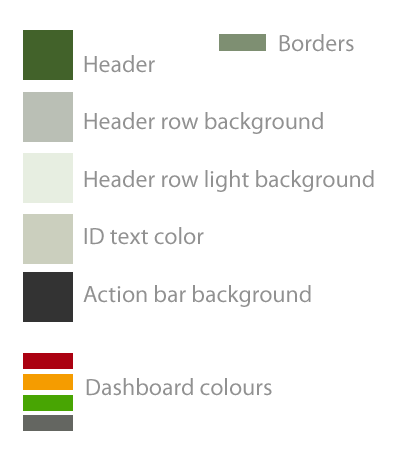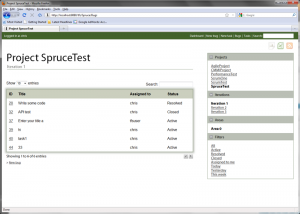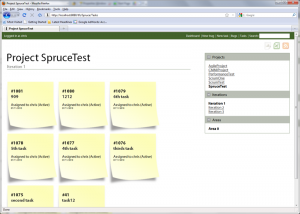A UI redesign for Spruce
January 27, 2011
After spending a week with the existing design, and having a sniff around the web at project management sites I began to realise the original design was in a nutshell, crap and ugly. It was too designery and not functional enough, and most importantly contained far too much complication in the form of jQuery dialogs, fancy tooltips and pointless fluff.
I like those kind of touches, but I think they’re best saved for websites that suit them – websites containing graphical material such as photos, artwork, marketing design agencies and so on.
So I did some hardcore surfing and came up with some inspiration for a new design and theme. I decided the design would stick to 5 main colours, and no javascript dialogs or ajax, atleast for now.
This was the colour scheme I settled on (green like a tree)

And with that, I made a 30 minute mockup in Photoshop Elements. Spruce now looks like this:


It was actually really easy to change the design with the MVC setup, all that was required was a slight change to the masterpage. I also took the time to clean out the cobwebs in the CSS and all those javascript libraries that are no longer needed, refactor the controllers, add RSS/CSV buttons up top and come with a dashboard concept for the user that’s logged in – all the information they need about the bugs/tasks that are relevant for them on the home. It’s up on Bitbucket now.
I also took the opportunity to look into parsing a search syntax for my grande plans for the search interface. I have a Windows 7/Google-style grammar in mind for searching, and after some research stumbled upon the C# library Irony. Most people have heard of ANTLR which I also looked into, but it appeared overly complicated for my needs, and I couldn’t figure out how to hand it a simple EBNF (Extended Backus–Naur Form) as a string.
Irony takes the Yacc approach – I didn’t know what that approach was until I’d finished my research – but it turns out you define the grammar in C#, and using some clever operator overloading are able to replicated EBNF’s | and {} syntax. You then get a tree of commands and values, or an Abstract Syntax Tree/AST.
This will be the most interesting part of the project for me, and something I hope to start on next, once the grunt work is complete sometime this week.
I'm Chris Small, a software engineer working in London. This is my tech blog. Find out more about me via Github, Stackoverflow, Resume